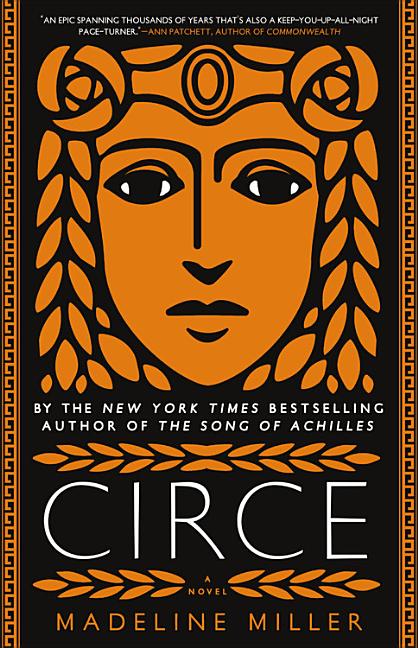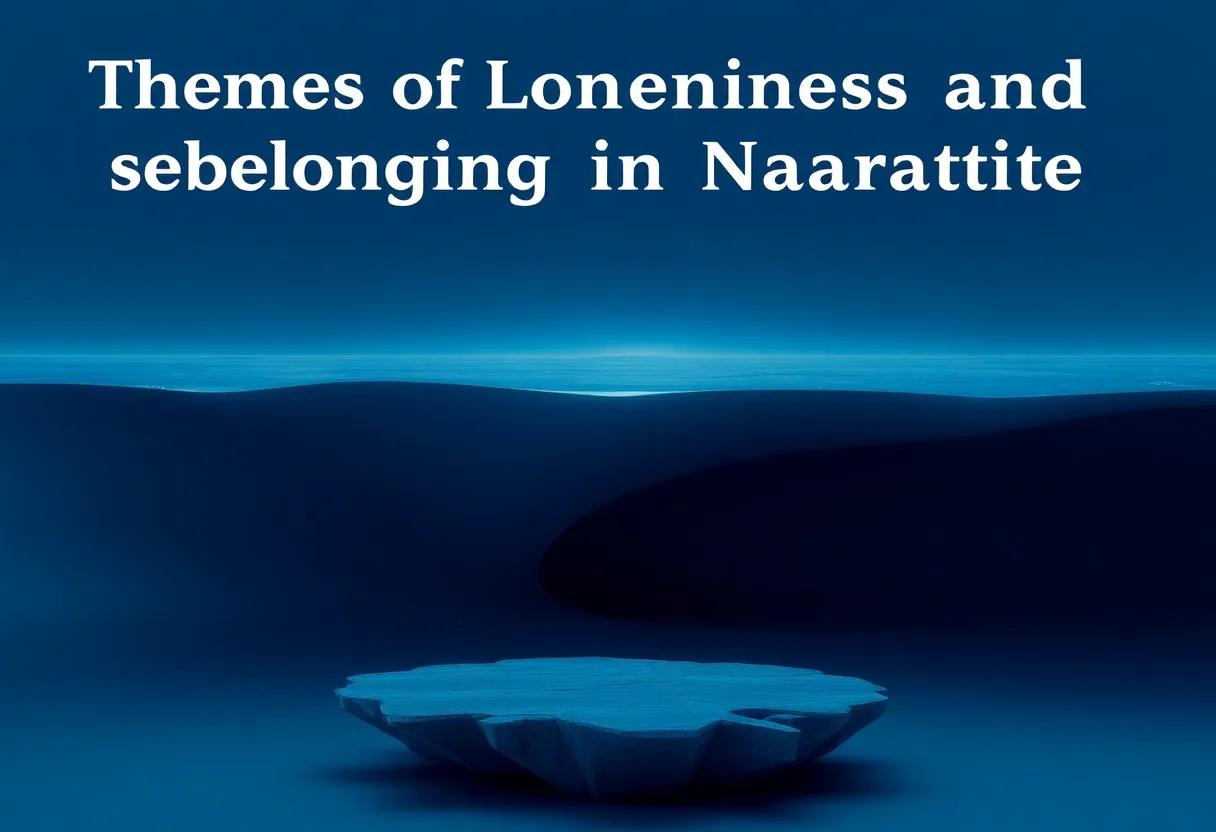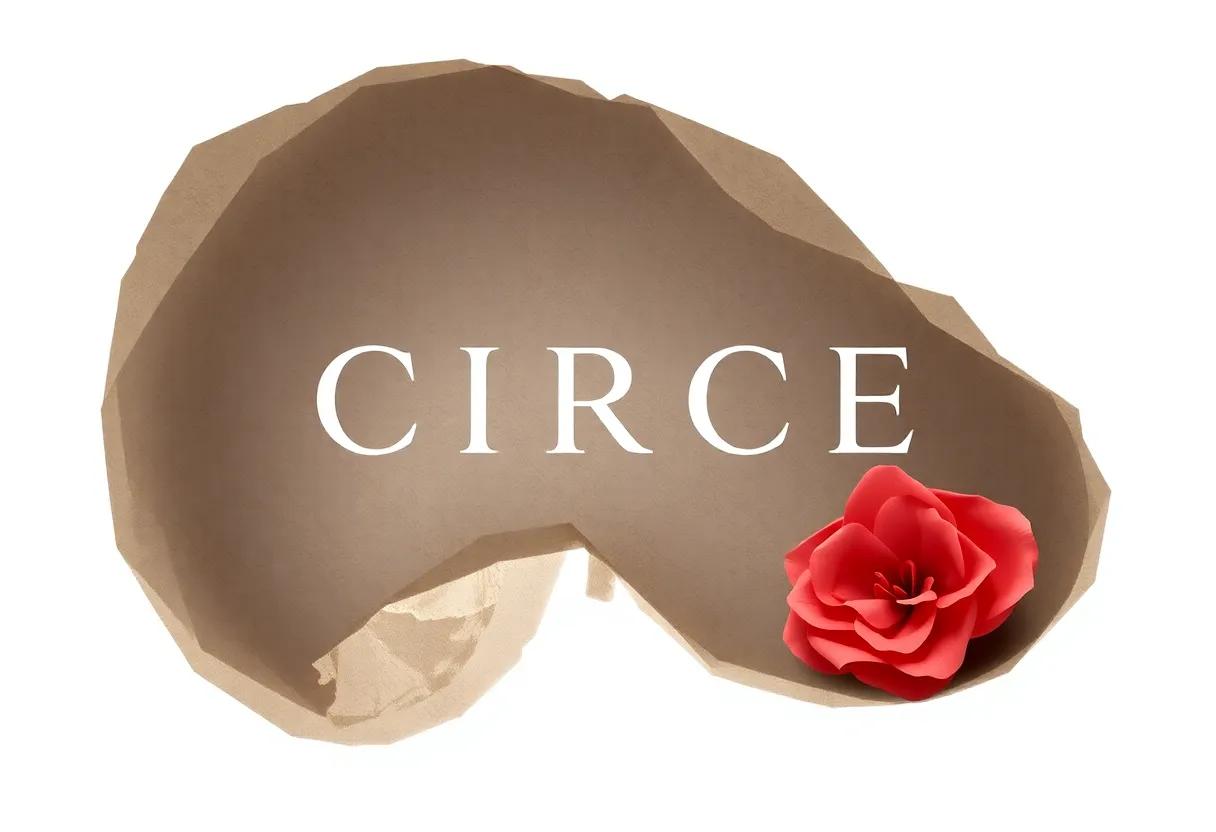In a world where ancient myths intertwine with modern sensibilities, Madeline Miller’s “Circe” emerges as a captivating retelling that invites readers too explore the depths of its titular character’s psyche. With the enchanting allure of the mythical and the poignant struggles of a woman seeking her own identity, Miller breathes vibrant life into the age-old tale of the banished witch. This review unravels the intricate threads of storytelling, character progress, and thematic richness that define “Circe,” offering insights into how Miller transforms a familiar narrative into an empowering odyssey of self-discovery and resilience. Join us as we delve into the pages of this remarkable novel,unveiling the magic and complexity that resonate with both ancient echoes and contemporary echoes.
The Evocative Landscape of Myth: Exploring Circe’s World Through Vivid Imagery and Masterful Prose
Madeline Miller stands as a masterful storyteller,wielding her prose like a spellbinding wand that conjures a world brimming with mythological allure.Through Circe’s journey, she invites readers to traverse a landscape where the mundane and divine interweave seamlessly. The island of Aiaia, with its enchanting beauty, becomes a character in its own right, lush with wildflowers, ancient trees, and the ever-whispering sea. here, the boundaries of reality blur as Circe interacts with a vibrant cast of gods, heroes, and beasts. Each sentence unfurls like a petal, revealing evocative imagery that paints a full panorama of her emotional and physical settings.
In crafting circe’s tale, Miller dives deep into themes of transformation, isolation, and empowerment, each motif reflecting the vivid hues of the protagonist’s expanding identity. The prose encapsulates Circe’s longing and solitude while celebrating her burgeoning strength, capturing the reader’s creativity. As she navigates the complexities of her existence, we are drawn into a rich tapestry woven from intricate details:
- The sound of crashing waves echoing her loneliness
- The scent of wild herbs infusing her newfound power
- The golden light punctuating her moments of self-discovery
It is a landscape both familiar and otherworldly, where every description serves to deepen our connection to Circe, making her a timeless figure whose story resonates with the heart’s quest for freedom and identity.
The Complexity of Female identity in Circe: A Journey of Transformation and Empowerment
In Madeline Miller’s Circe, the protagonist’s journey encapsulates the multifaceted nature of female identity through a lens of transformation and empowerment. Initially portrayed as a marginalized figure overshadowed by her divine lineage,Circe’s evolution reflects a deeper understanding of self beyond patriarchal constraints. As she navigates her isolation on Aiaia, her character is sculpted not by the expectations of others but through her choices and experiences. This liberation from traditional definitions of femininity allows her to explore her strengths and vulnerabilities, ultimately revealing a powerful narrative of self-discovery:
- Agency and Independence: Circe learns to wield her powers for herself, rather than for the gods who once dictated her fate.
- Connection with Nature: Her affinity for herbal magic symbolizes a return to her roots, honoring the earth as a source of strength and wisdom.
- Complex Relationships: The dynamics she shares with mortals and deities highlight both the power and fragility of her identity in a male-dominated world.
As Circe transforms from a passive character into a formidable heroine,miller crafts a rich tapestry of identity that speaks to the essence of femininity in all its complexity. Through her exile, Circe cultivates an understanding of what it means to be both creator and destroyer, challenging society’s expectations and carving out a narrative of empowerment. The subtle layers within her story echo broader themes of resilience, showcasing how identity can morph in the face of adversity:
| Theme | Representation in Circe |
|---|---|
| Transformation | Circe evolves from a passive figure to an empowered witch. |
| Empowerment | Her journey illustrates the reclaiming of personal agency. |
| Identity | Circe navigates her existence beyond societal norms. |
The Art of Crafting Myth: analyzing Madeline Miller’s Unique Perspective on Greek Lore
Madeline Miller weaves an intricate tapestry of myth and emotional depth in her retelling of the age-old stories surrounding Circe, a figure ofen relegated to the background of other heroes’ narratives. In her hands, Circe emerges as a multifaceted character, grappling with issues of identity, power, and solitude. Miller’s portrayal delves into the nuances that many traditional interpretations overlook, positioning Circe not merely as a sorceress but as a poignant symbol of female resilience and independence. Through a captivating narrative, Miller transforms age-old tales into a contemporary exploration of self-discovery and the complexities of love and transformation.
Central to Miller’s artistic approach is her ability to offer fresh perspectives on well-established mythological themes, often reexamining them through the lens of feminism and autonomy. The use of rich, descriptive prose ensures that readers are transported into Circe’s world, filling one’s imagination with vivid imagery and emotional landscapes. Key aspects of her narrative include:
- Empowerment: Circe’s journey from isolation to self-actualization.
- Nature and the Divine: The relationship between the natural world and goddess-like powers.
- Complex Relationships: Interactions with other mythic figures, revealing deeper vulnerabilities.
Through her masterful storytelling, Miller invites us to reconsider the roles assigned to women in mythology and to appreciate the depth of their experiences. Like a myth shaped by countless tellings, Miller’s Circe is both timeless and relevant, echoing the struggles and triumphs that resonate in contemporary society.
Character Development in circe: The Evolution of a Timeless Protagonist
Madeline Miller’s interpretation of Circe serves as a profound exploration of gender, power, and identity, inviting readers to witness the transformation of a character often relegated to the shadows of mythology. Initially portrayed as a lesser deity, Circe evolves from a timid daughter of Helios, struggling against the expectations placed upon her, into a formidable witch who embraces her solitude and strength. This journey unfolds with stunning clarity through formative experiences that shape her worldview and challenge societal norms. key elements of her journey include:
- Isolation: Her exile to Aiaia catalyzes her self-discovery.
- Empowerment: Mastering her magical abilities symbolizes her defiance against patriarchal authority.
- Relationships: Complex interactions with gods and mortals alike reveal her multifaceted nature.
As Circe encounters and navigates tumultuous relationships, her characterization deepens, revealing vulnerabilities that resonate profoundly with readers.Through her trials, including encounters with odysseus and the heartbreak of loss, Miller cultivates a character that embodies the essence of resilience.Circe’s ultimate realization of agency over her destiny resonates with contemporary audiences, making her journey not just timeless but a mirror reflecting the struggles faced by women throughout history.The following table encapsulates pivotal moments in Circe’s evolution:
| Moment | Importance |
|---|---|
| Exile | Start of self-empowerment. |
| Learning magic | Breaks free from patriarchal constraints. |
| Encountering Odysseus | Challenges her views on love and manipulation. |
| Finding her Voice | Embraces her identity fully. |
Themes of Loneliness and Belonging in Circe: The Emotional Core of the Narrative
Madeline Miller’s Circe intricately weaves the themes of loneliness and belonging into the fabric of its narrative, creating a profoundly emotional journey. Circe, an outsider even among the gods, finds herself grappling with a deep-seated isolation that stems from her unique identity and powers. The haunting solitude she experiences on the island of Aiaia serves as a backdrop for her personal growth. Her interactions with various mythological figures—menacing, tender, and complex—highlight her yearning for connection while together emphasizing her perpetual alienation. As she navigates love, betrayal, and self-discovery, readers witness her struggle to carve out a space where she feels accepted and valued, ultimately underscoring the price of individuality in a world that often demands conformity.
Throughout the story, moments of connection illuminate the path toward belonging. Circe’s relationships—whether it’s with the transformative elegance of her son, Telegonus, or her tumultuous encounters with mortals like Odysseus—illustrate her desire to bridge the chasm of loneliness. These bonds come with their own trials,as each relationship teaches her about the complexities of love and sacrifice.The narrative poignantly reveals that belonging is not just about being with others, but understanding oneself within those interactions.As Circe embraces her identities as a witch, a mother, and a woman unbound by societal expectations, she learns that true belonging often springs from the acceptance of one’s own solitude and the strength that arises from it.
The Interplay of Fate and Free Will: How Circe Navigates Her Destiny
In Madeline Miller’s reimagining of the mythological figure Circe, the tension between predestined paths and personal choice is profoundly explored. Miller paints Circe not merely as a victim of the gods’ whims, but as a character who wrestles with her own nature and decisions. Throughout the narrative, fate manifests in the form of her lineage and the expectations placed upon her by powerful deities, yet her journey is marked by moments of defiance and autonomy. Circe’s exile to Aiaia becomes a paradoxical sanctuary—a place where she begins to carve out her own identity apart from her heritage.
As she navigates her relationships with figures like Odysseus and Hermes, Circe grapples with the weight of prophecy and the choices that define her existence. Her story highlights how free will can shape destiny, illustrating that while one may be sculpted by the threads of fate, it is the choices made in the face of adversity that ultimately allow for transformation. This complex interplay invites readers to consider the broader implications of agency versus inevitability, resonating with a timeless inquiry into the human experience.
cinematic Quality of Circe: Imagining the Story’s Visual Potential on Screen
Imagining Madeline Miller’s Circe on screen invites a vibrant tapestry of visuals and emotions that capture the essence of both the mythical and the human. The enchanting landscapes of Aiaia, with its lush forests and turbulent seas, have the potential to become a breathtaking backdrop that reflects Circe’s inner turmoil and transformation. A skillful cinematographer could exploit the haunting contrasts between light and shadow, illustrating the delicate balance between beauty and isolation. The interplay of magical realism and gritty realism can be amplified through poignant color grading, with hues of gold and azure showcasing the allure of magic while darker tones amplify the themes of betrayal and personal growth.
In terms of character representation, the casting choices could greatly enhance the depth of the narrative. The following elements might bring the characters to life:
- Circe: A strong actress capable of embodying a deep emotional range to convey vulnerability and fierce independence.
- Odysseus: A charismatic actor who can convey both charm and a troubled past, illustrating the complexities of heroism.
- Hermes: A witty and agile performer who provides levity while also embodying the metaphysical connections in Circe’s world.
- The Gods: Renowned actors with a strong presence to evoke the awe and fear that the divine realms command.
with careful attention to costume design, mythical creatures, and immersive soundtracks, this narrative could transcend its literary origins, captivating audiences through stunning visuals and powerful performances.
Symbolism and Metaphor in Circe: Layers of Meaning Waiting to Be Uncovered
The exquisite tapestry of symbols woven throughout Madeline Miller’s *Circe* is rich with depth and intrigue. The transformation of Circe into a powerful sorceress serves not only as a pivotal plot point but also as a metaphor for self-actualization, highlighting the quest for identity amidst the expectations of gods and mortals alike. Miller masterfully employs nature as a recurring motif, with the enchanted island of Aiaia representing both isolation and refuge, reflecting Circe’s internal struggles and her growth into autonomy. The duality of her own magical abilities mirrors the dichotomy of creation and destruction, compelling readers to ponder the cost of power and the loneliness it can entail.
Moreover, the characters in Circe’s world embody various forms of masculinity and femininity, allowing Miller to critique the traditional tropes that define them.Figures like Odysseus and Hermes offer insights into male dominance and privilege, whereas Circe’s evolution challenges these norms by showcasing the strength found in vulnerability. This interplay creates a rich landscape of interpersonal dynamics that encourages a deeper exploration of gender roles within myth. The table below illustrates key symbols and their interpretations, further unveiling the layers of meaning embedded in this enchanting tale:
| Symbol | Interpretation |
|---|---|
| Island of Aiaia | Isolation and self-discovery |
| Circe’s Potion | Agency and transformation |
| Animals | Love, betrayal, and understanding |
| Sun | Illumination of truth |
Miller’s Narrative Style: The Poetry of Prose and Its Impact on Readers
Madeline Miller’s prose in Circe is a splendid tapestry woven from the threads of myth and modernity, creating a narrative that enchants and captivates the reader’s imagination. Her unique approach to storytelling allows the ancient tale of the titular witch to resonate deeply with contemporary themes of identity and empowerment. Miller’s deft use of lyrical language transforms ordinary descriptions into striking imagery, painting a vivid picture of the world Circe inhabits. The seamless blending of poetic elements with prose elevates the narrative to a realm of timeless beauty.
Through her characters’ dialogues and internal monologues, Miller draws readers into Circe’s emotional landscape, making them feel the weight of her solitude, strength, and defiance. This connection fosters empathy, as readers are compelled to explore complex themes such as feminism, loneliness, and the quest for self-discovery. To illustrate the impact of her narrative style, consider the following table that highlights key thematic elements in the story:
| Theme | Description |
|---|---|
| Empowerment | Circe’s transformation from a disregarded nymph to a powerful sorceress. |
| Isolation | The solitude of exile leading to self-discovery and strength. |
| Identity | Struggles with self-acceptance and forging one’s path in a patriarchal world. |
The Role of Gods and Mortals in Circe: A Commentary on Power Dynamics
in Madeline Miller’s “Circe,” the interplay between gods and mortals serves as a dynamic exploration of power and subjugation, revealing the complexities of divine authority and human autonomy. The gods, portrayed as capricious and frequently enough self-serving beings, wield their immense power with little regard for the consequences that ripple through the lives of mortals. Circe, the protagonist, encapsulates this struggle as she confronts the limitations imposed by her divine lineage while simultaneously cultivating her own sense of agency. Her journey illustrates the tension between the idealization of gods and the vulnerability of mortals, emphasizing how this dichotomy shapes relationships and forces one to either conform to or resist the dictates of a higher power.
Moreover, the narrative delves into the nuances of power dynamics through Circe’s interactions with other characters, both divine and human. each encounter uncovers layers of manipulation, dependency, and rebellion, reflecting on themes such as identity and self-discovery. The presentation of power in “Circe” can be encapsulated in the following key points:
- Divine Interference: Gods often intervene in mortal lives for amusement or personal gain.
- Mortality as a Strength: Humans possess unique strengths that the gods frequently enough overlook or underestimate.
- Empowerment through Isolation: Circe’s exile on Aiaia becomes a space for self-realization and the assertion of her own power.
This intricate relationship ultimately invites readers to reflect on the broader implications of power, examining how both realms influence one another while prompting questions about empowerment and autonomy in the face of overwhelming forces.
Circe’s Legacy: The Relevance of Miller’s Retelling in Today’s Society
Madeline Miller’s retelling of the ancient myth invites readers to explore themes of identity, empowerment, and isolation that resonate deeply in today’s world. Circe’s journey of transformation from a voiceless nymph to a powerful witch encapsulates the struggle for self-definition many experience in contemporary society. As gender dynamics continue to evolve, Miller’s narrative sheds light on women’s voices that have historically been muted, offering a modern lens through which we can understand resilience and agency. Circe embodies the quest for autonomy, a theme that echoes the voices of those fighting for their rights and recognition amidst societal constraints.
The novel also serves as a poignant reflection on the complexities of relationships and choices in an age where personal connections can frequently enough feel transactional. By portraying Circe’s interactions with gods, mortals, and her own kin, Miller explores the intricacies of love, betrayal, and loyalty, prompting readers to consider the moral ambiguities that accompany human experience. In a world grappling with issues of belonging and purpose, circe’s legacy challenges us to confront our fears and embrace our individual paths, urging us to ask: how do we reclaim our narratives in an ever-using landscape? This timeless tale is thus not merely a story of myth, but rather a mirror reflecting the enduring struggles and triumphs that define the human condition.
Recommendations for Further Reading: exploring More of Madeline Miller’s Works
If you found Madeline Miller’s portrayal of mythological themes and rich character development in Circe captivating, you’ll likely enjoy her debut novel, The Song of Achilles. this beautifully woven tale takes readers on an emotional journey through the lives of Achilles and Patroclus,exploring love,destiny,and the impact of war on personal relationships. The deep connection between the characters and the relentless forces of fate will resonate with anyone drawn to Miller’s lyrical storytelling style. You may also want to explore a selection of her short stories, which delve into similar themes with fresh perspectives and creativity.
For those eager to delve deeper into the world of mythology with a modern twist, consider checking out other contemporary retellings of classic myths. Here are a few recommendations that compliment Miller’s works:
- Ariadne by Jennifer saint – a retelling of the Minotaur myth from the perspective of the mythical princess.
- Home Fire by Kamila Shamsie - a modern take on the story of Antigone, interweaving themes of family and loyalty.
- Balzac and the Little Chinese Seamstress by Dai Sijie – while not a retelling, this novel celebrates the power of storytelling amidst the backdrop of cultural upheaval.
Author Insights: Madeline Miller’s Journey from Classicist to Contemporary Storyteller
In her acclaimed novel, ‘Circe’, Miller beautifully weaves the ancient with the contemporary, giving a voice to characters often relegated to the sidelines.By focusing on Circe’s journey of self-discovery,Miller invites readers to explore themes of empowerment,isolation,and identity. The narrative unfolds as an exploration of the struggles faced by women, both in myth and in modern society. Through rich prose and vivid imagery, she creates an immersive experience that resonates on multiple levels. This unique perspective not only revitalizes old tales but also demonstrates Miller’s exceptional talent for bringing the past into dialog with the present.
Wrapping Up
As we close the pages on “,” we are left with the profound realization that myth is not merely a collection of ancient tales but a canvas upon which the complexities of the human experience are painted.Miller’s rendition of Circe invites readers to reflect on the intricate dance between power and vulnerability, isolation and connection. In exploring the depths of the titular character’s journey,we find echoes of our own struggles and triumphs— a timeless reminder that within every legend lies a universal truth.
Whether you are drawn to the richness of mythology, the nuances of character development, or the lyrical prose that miller so masterfully wields, this novel offers a treasure trove for any literary enthusiast. So, as you set this book aside, remember that the allure of Circe’s enchantment lingers, urging us to consider the myriad ways in which we weave our stories—both in shadow and in light. Happy reading, and may the magic of literature continue to inspire your own narratives long after the last word has been savored.















